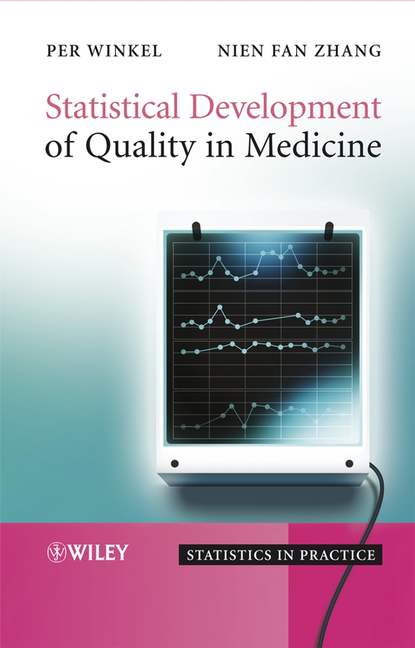Книга "Статистическое развитие качества в медицине" рассматривает применение методов промышленного контроля качества в здравоохранении и представляет статистические концепции, лежащие в основе этого подхода. В книге содержатся многочисленные примеры из жизни и исследований авторов, что позволяет читателю выбрать соответствующую диаграмму контроля, критически ее применить, улучшить при необходимости и контролировать ее стабильность. Кроме того, читатель получает необходимую базу для критической оценки литературы по применению диаграмм контроля и корректировке рисков, а также для применения полученных результатов. Книга содержит доступное введение, излагающее необходимые статистические концепции, используемые в этой области. Статистическое развитие качества в медицине адресована в первую очередь работникам здравоохранения, ответственным за разработку и контроль качества медицинских услуг. Однако она также идеально подходит для статистиков, работающих с проблемами здравоохранения, диагностических и фармацевтических компаний, а также для выпускников программ по контролю качества. Книга содержит множество практических примеров и задач, решения которых можно найти на дополнительном веб-сайте.
Promoting standards and guidelines toward advancing quality assurance and monitoring are integral parts of the healthcare sector. Quantified methods are required to control, monitor, and enhance the quality of clinical procedures. Statistical Development Of Quality In Medicine reveals the statistical principles behind applying industrial methodology for quality control, and expounds upon them through numerous examples and experiments. By completing these case studies, health care professionals will be able to select the appropriate check-sheet to use, adapt it to meet their needs, and scrutinize its stabilty. Much of the work in this book provides a foundational reference for assessing the literature related to these check-sheets along with utilizing their results. The webpage accompanying the book features various exercises with solutions, as well as examples taken from Statgraphics®. The easy language of Statistical Development in Medical practice draws in many students. Primarily intended for health care policymakers and office workers charged with creating and overseeing the standardization of healthcare services, this work is also suitable for qualitative analysts working within the healthcare sphere, physician practices, medication companies, and doctoral students specializing in quality checking.
Электронная Книга «Statistical Development of Quality in Medicine» написана автором Per Winkel в году.
Минимальный возраст читателя: 0
Язык: Английский
ISBN: 9780470515891
Описание книги от Per Winkel
The promotion of standards and guidelines to advance quality assurance and control is an integral part of the health care sector. Quantitative methods are needed to monitor, control and improve the quality of medical processes. Statistical Development of Quality in Medicine presents the statistical concepts behind the application of industrial quality control methods. Filled with numerous case studies and worked examples, the text enables the reader to choose the relevant control chart, to critically apply it, improve it if necessary, and monitor its stability. Furthermore, the reader is provided with the necessary background to critically assess the literature on the application of control charts and risk adjustment and to apply the findings. Contains a user-friendly introduction, setting out the necessary statistical concepts used in the field. Uses numerous real-life case studies from the literature and the authors’ own research as the backbone of the text. Provides a supplementary website featuring problems and answers drawn from the book, alongside examples in Statgraphics. The accessible style of Statistical Development of in Clinical Medicine invites a large readership. It is primarily aimed at health care officials, and personnel responsible for developing and controlling the quality of health care services. However, it is also ideal for statisticians working with health care problems, diagnostic and pharmaceutical companies, and graduate students of quality control.



















